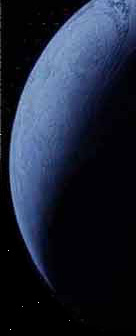
 |
Atmosphere |

 |
Cosmic radiation |

 |
Dense atmospheric layers |

 |
Heavy materials |

 |
Law of ballistic |

 |
Library of Alexandria |

 |
Liveload |

 |
Lunar and planetary attraction |

 |
Micrometeorites |

 |
Orbit
|

 |
Planet |

 |
Pressure from solar radiation |

 |
Re-entry vehicles |

 |
Solar system |

 |
Titanium |

 |
Tungsten |

 |
Van Allen Belt |
 |

 |
Atmosphere |
| |
Gaseous covering enveloping a planet or another celestial body. |
 |

 |
Cosmic radiation |
| |
Flux of high energy charged particles (mainly the nucleus of hydrogen- protons -and helium- Alpha particles,- in a weak proportion of heavy atomic nucleus) of solar, galactic or extra-galactic origin. The principle sources of cosmic radiation are the solar eruptions, the nucleus of our galaxy, stellar explosions (supernova) and extra-galactic objects such as the nucleus of active galaxies and the quasars. |
 |

 |
Dense atmospheric layers |
| |
By dense atmospheric layers we are referring to all the layers that have an altitude of less than 120 kms. It is beyond this altitude that the breaking exerted by the terrestrial atmosphere becomes rapidly sensitive to the slowing down of the satellite and moreover the atmospheric pressure rises, thus making the satellite approach the earth. |
 |

 |
Heavy materials |
| |
Under the classification of simple elements of Mendeleieff, the heavy elements correspond to those that have a high atomic weight. |
 |

 |
Law of ballistic |
| |
(Ballistic) Science of the movement of projectiles or of the entire body (spatial engines for example) uniquely under the laws of gravitation.
Gravitation is the phenomenon by which any two bodies attract each other by a force that is directly proportional to their mass and inversely proportional to the square of their distance. |
 |

 |
Library of Alexandria |
| |
Founded by Ptolémèe Sotêr (-360- 283 BC), this library would have contained around 700,000 volumes. Burned down after the entry of Caesar at Alexandria, it was necessary to reconstruct it. It was once again destroyed in 391. Its objective was to gather all the information and knowledge about the world at one place. |
 |

 |
Liveload |
| |
A total of all the equipment transported by a spatial vehicle to achieve a given mission. |
 |

 |
Lunar and planetary attraction |
| |
Go to 'law of ballistic' |
 |

 |
Micrometeorites |
| |
Natural solid metallic or rocky bodies, with varying dimensions, circulating in the interplanetary space or considered after its fall to the surface of the Earth. |
 |

 |
Orbit
|
| |
Trajectory of a celestial body around another. |
 |

 |
Planet |
| |
Dense celestial body, deprived of all thermonuclear reactions, that gravitates around the Sun or around another star. |
 |

 |
Pressure from solar radiation |
| |
The sun continuously radiates around itself energy in the form of electromagnetic waves. The medium of these waves is photons. When these hit the surface, they undergo a pressure which gives a force, similar to that, when the wind exerts pressure on the sails of a boat. These infinitesimal forces, finish by affecting the movements of the bodies on which they exert pressure or in the case of a satellite in orbit, by imperceptibly modifying its path. |
 |

 |
Re-entry vehicles |
| |
Spatial vessel conceived to be injected in a spatial engine and recuperated on ground, safe and sound. |
 |

 |
Solar system |
| |
Total of the Sun, and the celestial bodies, particularly the planets that gravitate around it. Region in space where the Sun exerts a dominant force with respect to that exerted by other stars. Besides the Sun, the Solar system is composed of nine principle planets, thousands of asteroids, comets, meteorites and interplanetary dust particles. One can explore the Solar system by space probes. All the principle planets are concentrated in a disk with a diameter of 6 billion kilometers (that is 40 times the average distance between the Earth and the Sun), but we presume that there exists a vast concentration of the nucleus of comets (Oort cloud) from the Sun at distances between 40,000 and 100, 000 times that of the Earth and the Sun. |
 |

 |
Titanium |
| |
Brilliant, white metal. Atomic element no. 22, atomic mass 47,90. Chemical symbol Ti. Titanium is a metal used particularly in the aeronautic industries. Although its atomic weight is less than that of tungsten, it is used in the fabrication of one of the anti-radiation shields of KEO.
Due to its huge capacity to distort, Titanium was selected to constitute the metallic sphere relating to the liveload of KEO, which at the time of its return to Earth, will have to undergo several strong shocks. |
 |

 |
Tungsten |
| |
Gray/white metal. Atomic element no. 74, atomic mass 183,85. Chemical symbol W. Particularly abundant in the Earth's crust.
Due to its very high capacity to resist extreme temperatures, it contributes to the efficacy of the insulation of the re-entry capsule, to allow KEO to return intact to Earth.
Its high atomic weight enables it to be especially efficient as a protective shield against cosmic radiation. |
 |

 |
Van Allen Belt |
| |
Zone surrounding the Earth, which contains charged particles that are trapped and accelerated by the magnetic terrestrial field. The Van Allen belt naturally protects the Earth from the cosmic solar radiation. |
















